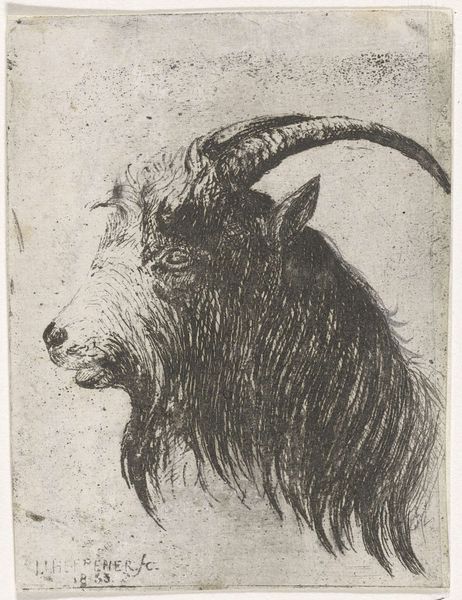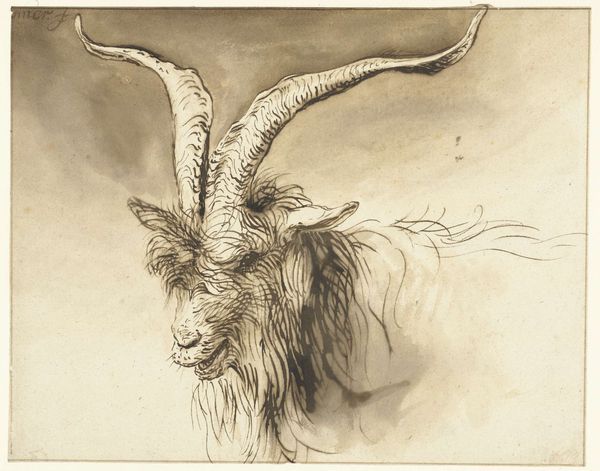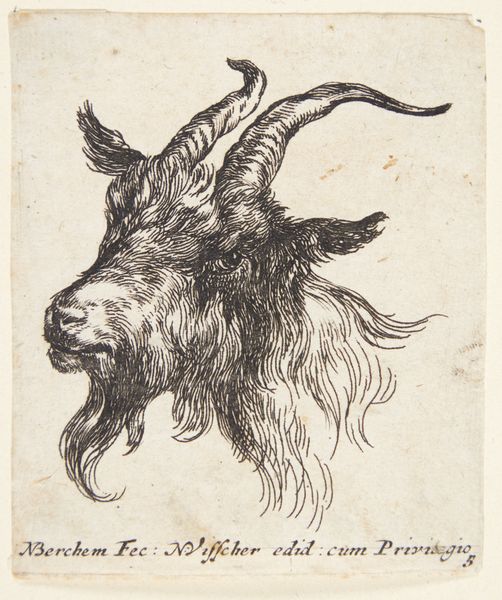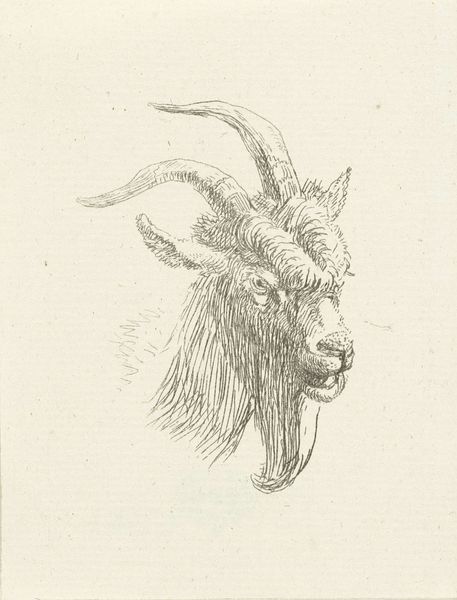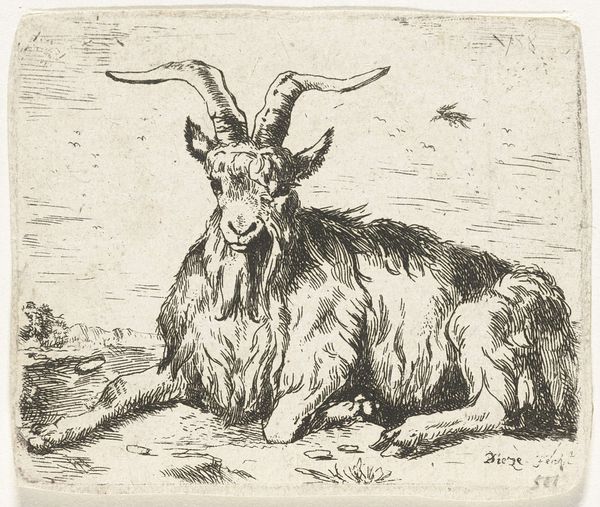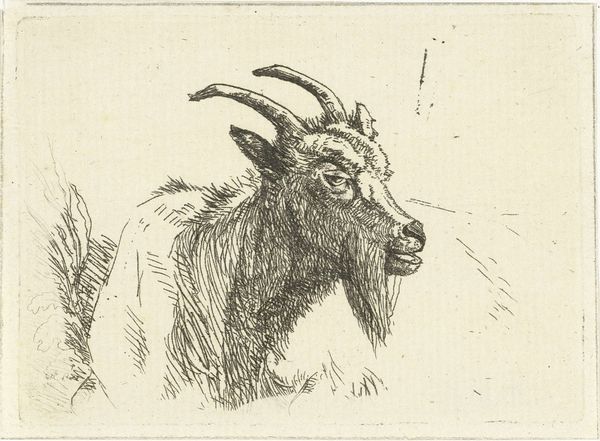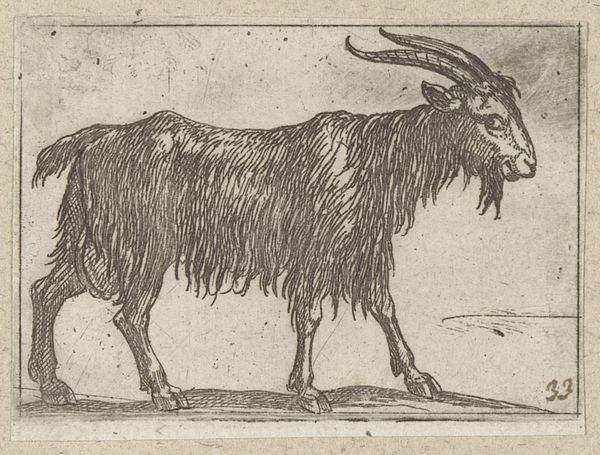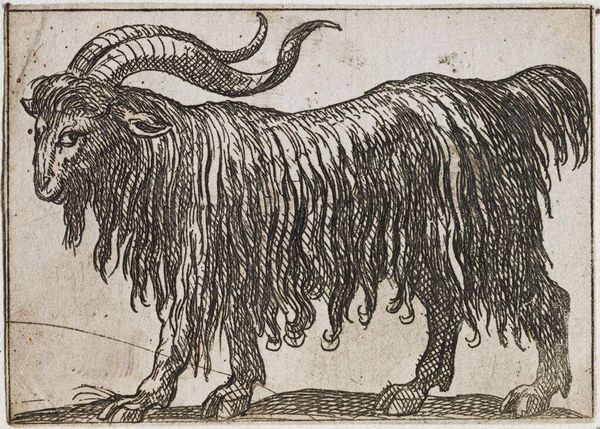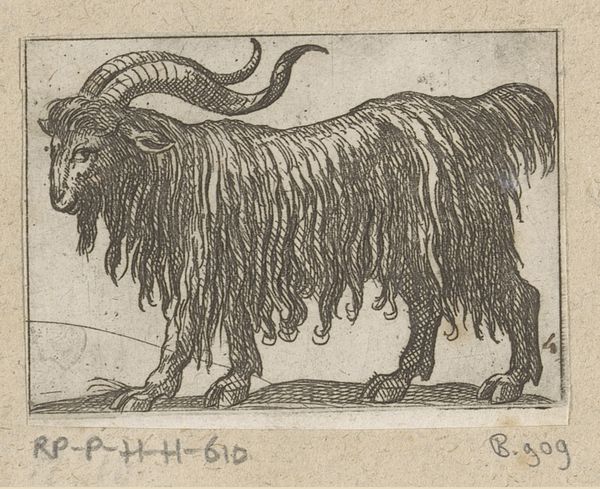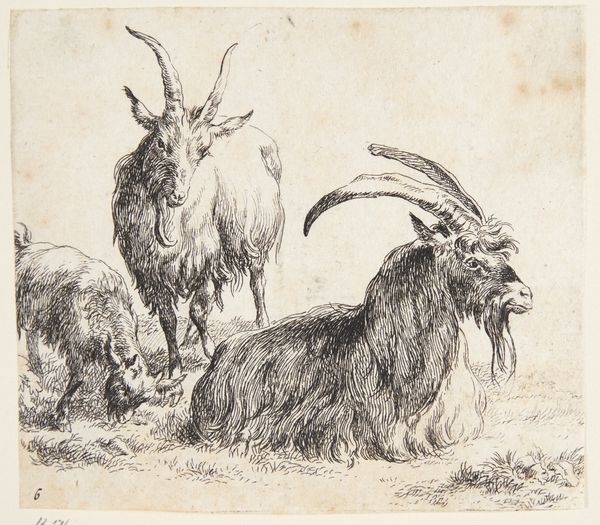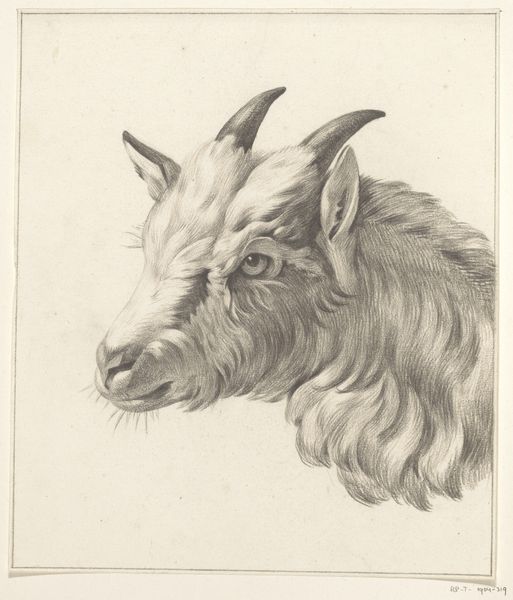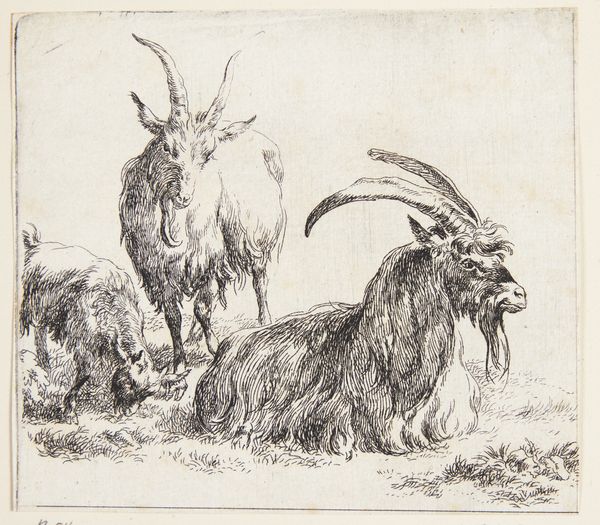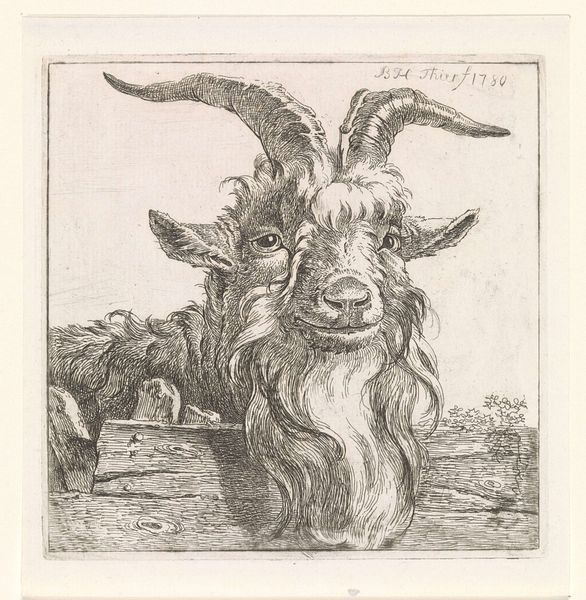
print, etching
#
baroque
#
animal
# print
#
etching
#
line
Dimensions: 82 mm (height) x 70 mm (width) (plademaal)
Editor: Here we have Nicolaes Berchem's etching, "Gedehoved vendt mod højre," created sometime between 1620 and 1683. I’m struck by the texture he achieves using only lines – the goat's hair looks almost tangible. How do you interpret this work, considering its historical context? Curator: Well, considering Berchem was Dutch and part of the Golden Age, these pastoral scenes were incredibly popular. They weren’t just about pretty pictures of farm life; they often functioned as subtle expressions of national pride and prosperity. Think of them as visual branding for the burgeoning Dutch Republic. Why do you think an etching like this might have resonated with the public? Editor: Maybe it’s about idealized rural life versus the growing urban centers? A kind of visual counterpoint? Curator: Precisely. Remember, the Dutch Republic was becoming increasingly urbanized and involved in global trade. Prints like these offered a comforting, perhaps romanticized, vision of the countryside. Moreover, the accessibility of prints democratized art consumption. It brought art into the homes of a broader public. It's not just a portrait of a goat; it reflects societal values being codified and distributed. Does that change how you view the piece? Editor: Definitely! Seeing it as part of a larger cultural narrative rather than just a single image of an animal is fascinating. It gives it a much deeper resonance. Curator: Exactly. It highlights how artistic choices, even in seemingly simple subjects, are often entangled with broader social and political landscapes. Editor: I never considered how “branding” could work through fine art in that period! Thanks!
Comments
No comments
Be the first to comment and join the conversation on the ultimate creative platform.
